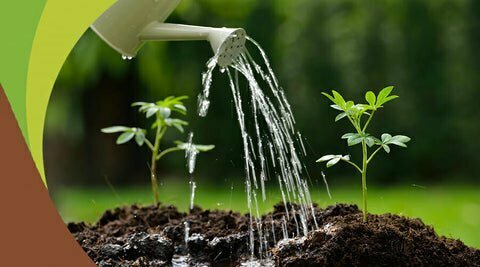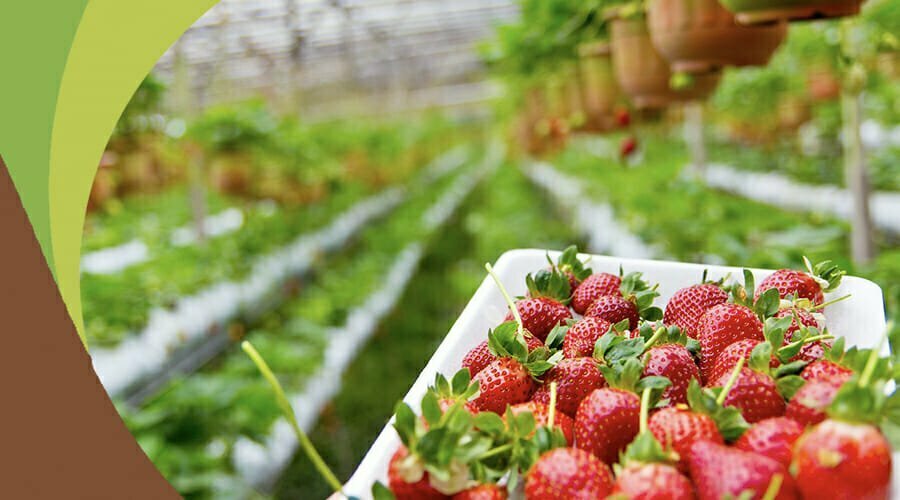Which plants grow in coco coir?
It is easy to regard Coco Coir as a ‘miracle’ growing medium, thanks to its many benefits and applications for indoor and outdoor gardening. However, whether a plant will be able to thrive in a part- or full coconut fibre substrate will depend on several factors – relating to both the growing medium and external factors outside of the gardener’s control.
While it is important to consider the specific care needs of the plant, you may first wish to determine whether coco coir will be able to provide the right growing environment. Below are some points to weigh up before beginning your gardening project.
WHICH TYPE OF COCO COIR SHOULD YOU USE?
Coco coir manufactured for gardening is sold in three different forms: pith/peat, fibre and chips.
Coco coir peat
Coco peat is the most common form you’re likely to encounter. This is compacted, finely ground coconut husk, which most closely resembles soil or sphagnum peat moss. Coco peat is denser in volume compared with other varieties, meaning fewer naturally occurring air pockets will be present around the plant’s roots. As coco peat is also highly absorbent, there’s a distinct possibility that the plant may hold too much water and essentially ‘drown’ (or ‘choke’ if it’s not getting enough nitrogen and oxygen from the air).
Coco coir fibre
Coir fibre is precisely what it sounds like — a stringy bundle of coarse coconut husk. This form of coco coir will have a lot of empty space between the fibres. Consequently, excellent aeration is its defining trait. However, as the material tends to degrade over time, the ability for coir fibre to retain air will also decrease. Given the lack of overall density, coir fibre will also have a harder time holding on to water.
Coco coir chips
Coir chips are the coarsest form of coco coir. Unlike coir fibres, the chips are hewn roughly and have a large surface area, meaning a lot of water will be absorbed and retained. However, because coir chips are not tightly compacted, the volume of air between them is significant, so the substrate will be well aerated.
There are distinct benefits to growing plants in a substance which is not dense and tightly compacted. Because of the space available, plants have the room to grow larger, longer root systems, which in turn allows the plant to thrive by improving the ability to take in water and nutrients.

COCO COIR QUALITY

COCO COIR QUALITY
Coco coir is an industrially produced product: it goes through many processes and phases of manufacture before arriving at the store. As with all manufactured products, the quality of what the consumer receives will vary depending on the processes and raw materials used.
The quality of the coco coir you use will have a significant impact on a plant’s ability to thrive. Some of the characteristics of the substrate to consider are:
Coco coir salt content
To extract coco coir from coconuts, each coconut is washed in water — either in a lake, stream or river.
A river may contain high salt levels if it is subject to tidal flow. This salt is transferred from the river water to the coconut husks during the soaking process. Excess salt can have a negative effect on a plant’s health, so it needs to be removed.
Coconuts growing close to a sea or ocean may also contain elevated salt levels.
Salt in coir can be rinsed away with clean water. It will also separate from fibres during the ageing process, which lasts six months to a year.
Drying and compressing fibres
Coco coir can be dried mechanically, but the harshness of this method can increase the chances of coir fibres being damaged. Ideally, the fibres should be dried naturally in the sun.
Coir that has been dried and then compressed into bricks or bales will contain some damaged fibres and coir dust, meaning the final product will not be as ‘clean’ as you might like.
Waste coir can impact on plant growth. Unless it is sieved first, the dust and useless fibre will sit in the mixture, reducing the volume of air and water reaching the plant’s roots.
Unwanted moisture absorption and fibre contamination
If raw coco coir is stored incorrectly, unwanted moisture could be absorbed. Damp coir left in long-term storage will rot. This may invite unwanted contaminants and pathogens, such as mould or mildew.
If coir is kept for too long, it also exposes it to risk of infestation. If insects colonize the fibres, they will be damaged.
Coco coir can be chemically treated to prevent contamination or infestation. However, preventative chemical treatment can be harsh on the fibres. While it will reduce the chance of insect or fungal damage, the chemicals themselves can degrade cellulose in the fibres.
Steam treatment is considered to be a ‘kinder’ alternative.
HEALTHY COCO COIR SUBSTRATE
Coco coir is an inert growing substance, with a pH level near neutral. It is essentially a ‘blank slate’ for anything put into it. This suits some plants, but not all will thrive unless this balance is altered slightly.
As a result, many gardeners will not use coco coir alone; the substrate will often be a mixture of coir with another substrate, such as regular soil or perlite.
Mixing coir with another substrate will reduce the amount of coir being used at any one time, and gives the plant an opportunity to grow in a nutritionally richer environment.
As a result of mixing, the pH balance of the substrate may become more acidic or alkaline.
The substrate’s salt content may also change depending on the amount of nutrients and coco coir added to the mixture. Excess salt can be removed by flushing the mixture with distilled water, although you will run the risk of losing useful nutrients.
If a ‘blank slate’ is not the desired option, reusing coconut coir from another project can be a boon for new plants. Coconut coir will retain ‘good’ microorganisms, such as variants of the Trichoderma fungus, while also protecting against harmful pests, weeds and bacteria. However, if you wish to keep these elements it is best to avoid anti-pathogen treatments.











